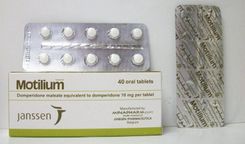This is an automatically translated article.
Anesthesia is the use of anesthetic drugs to put into the patient's body, either through inhalation or intravenous, leading to a reversible state of anesthesia. Patients can breathe on their own or with active controlled breathing during anesthesia.1. Intravenous anesthetics
In local and regional anaesthesia, intravenous anesthetics are commonly used for induction, maintenance, and sedation. Physical movement in and out of the brain affects the rapid onset and end times of anesthesia.Some intravenous anesthetics such as propofol, etomidat, thiopental..after being injected with a bolus dose, these drugs will be rapidly distributed into highly perfused tissues, such as the heart, brain... The effect is very fast. As the drug continues to be distributed into muscle and adipose tissue, plasma concentrations decline rapidly.
These drugs are rapidly redistributed from the brain and end their effects when plasma concentrations fall to a certain level. Because purification in the body still needs to happen, such as metabolism in the liver, elimination in the kidneys, the active part of the drug remains in the body.
Intravenous anesthetics have the following characteristics:
Drugs given intravenously The induction of anesthesia is induced in a pleasant manner The drug has no analgesic effect The drug has a rapid effect on sleep, wakes well with Few side effects May release or not release Histamine Most drugs have the effect of reducing intracranial pressure Divided into two main groups: non-barbituric and barbiturates

Thuốc mê Thiopental
Some commonly used intravenous anesthetics:
Propofol: Because of both arterial and venous dilation, the drug often causes a very rapid decrease in blood pressure during induction of anesthesia. The analgesic effect of the drug is weak at sedating concentrations. Depending on the dose used, the drug can cause a decrease in tidal volume and frequency. So in the case of patients with hypovolemia, it is difficult to compensate. Ketamine: this is an intravenous anesthetic of the barbituric group, which can be used by many routes, such as injection, intravenous, oral, anal....The drug is often used for sensitive patients. with central nervous system effects dissociating anesthesia, increased intracranial pressure and blood flow, cerebral vasomotor response to CO2 remains unchanged. Thiopental: a drug with very rapid action to sites and rapid initial distribution with almost immediate effects when used as a single dose. Do not use a lot of drugs for anesthesia because the drug accumulates if repeated injections or continuous infusion. The drug may cause pain at the injection site because of vein irritation. If Thiopental is injected outside the blood vessel, it can lead to tissue necrosis. Etomidate: The drug may cause minimal changes in heart rate, blood pressure and cardiac output. Depending on the dose used, the drug may cause a decrease in tidal volume and frequency, and transient apnea may occur.

Thuốc Propofol
2. Indication of intravenous anesthetics
Intravenous anesthetic is indicated in some of the following cases:
Performing surgery in a short time The surgical process does not require muscle relaxation Performing extra-abdominal and thoracic surgery Anesthesia for surgical patients Inpatient Perform continuous general intravenous anesthesia Sedation during resuscitation Adequate respiratory and perfusion equipment The patient is in relatively stable respiratory and circulatory status

Thuốc mê được đưa vào cơ thể qua đường tĩnh mạch
3. Contraindications to intravenous anesthetics
Intravenous anesthetics should not be used in the following cases:
Patient has a history of allergic reaction to the drug being taken. Inadequate respiratory resuscitation No reliable intravenous line Anesthesiologists are inexperienced. Intravenous anesthetics should not be used for major and prolonged surgeries. The patient's respiratory and circulatory status is unstable. Patients with renal or hepatic impairment

Bệnh nhân bị sơ gan không nên sử dụng thuốc gây mê đường tĩnh mạch
4. Side effects when using intravenous anesthetics
Intravenous anesthetics can cause a number of undesirable effects, mainly due to improper use, including:
Respiratory and circulatory conditions are impaired Due to the sensitivity of the patient , can cause absolute overdose Patient is allergic to the drug with manifestations such as malignant fever, rash, asthma, shock... May cause liver failure Patient is slow to wake up due to long accumulation of drugs Appear epileptic seizures If injected outside the blood vessel can lead to tissue necrosis May lead to very strong vasospasm and downstream ischemia if injected into an artery Pain at the injection site Intravenous anesthetics are drugs The most common use today due to its convenience, fast anesthetic time and quite safe for patients. However, to avoid unwanted effects caused by drugs, it is advisable to choose reputable medical facilities for implementation.
Vinmec International General Hospital is one of the hospitals that not only ensures professional quality with a team of leading medical professionals, modern equipment and technology, but also stands out for its examination and consultation services. comprehensive and professional medical consultation and treatment; civilized, polite, safe and sterile medical examination and treatment space.
Please dial HOTLINE for more information or register for an appointment HERE. Download MyVinmec app to make appointments faster and to manage your bookings easily.













